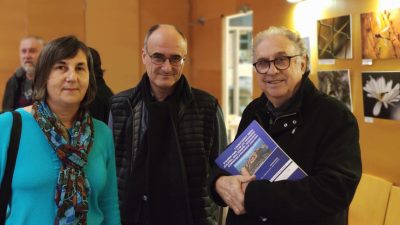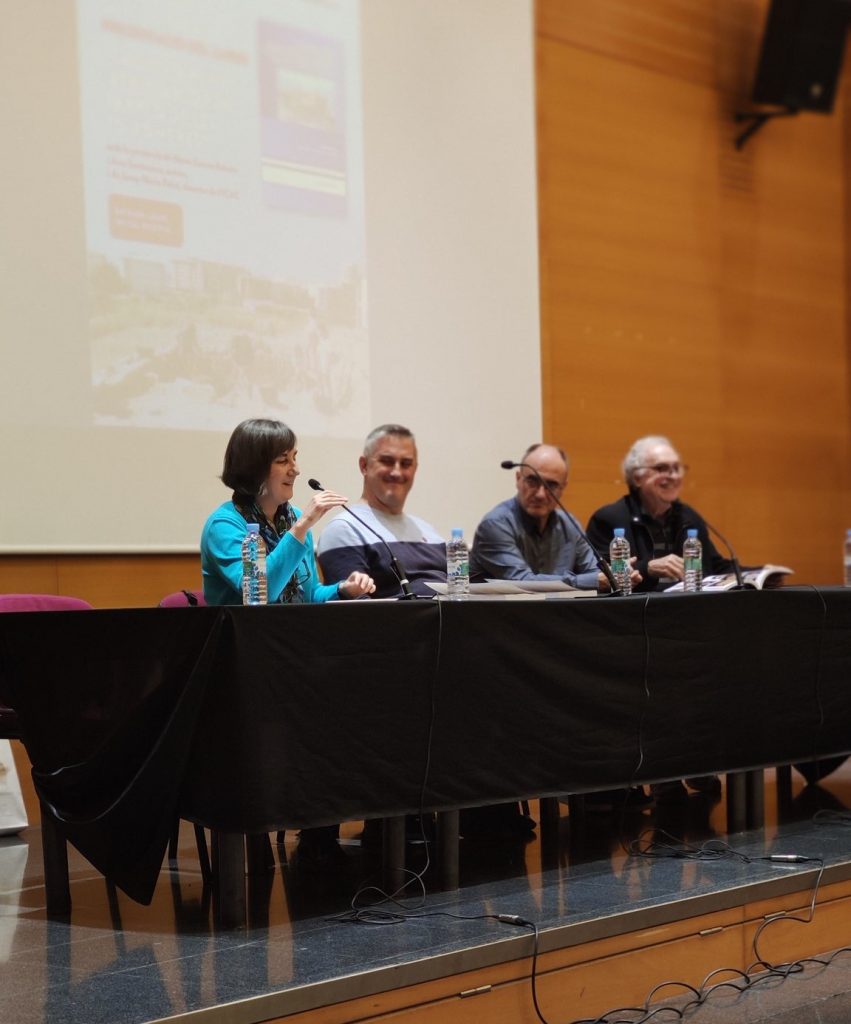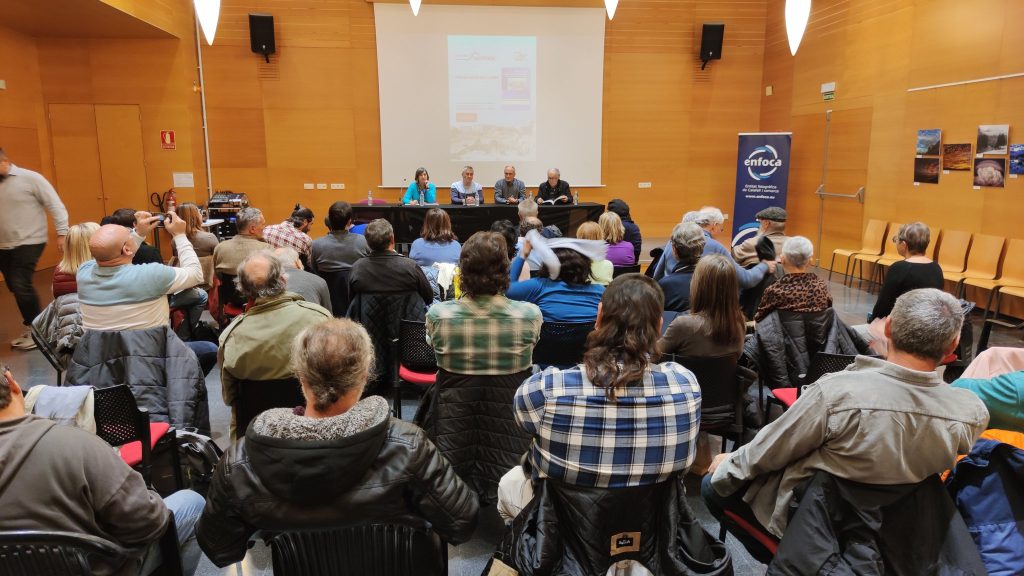
On Thursday, February 15th, the Cinema Iris Civic Centre in Calafell hosted the presentation of a monograph that captures the legacy of excavation campaigns at the Alorda Park site, also known as Les Toixoneres.
Around 50 people attended the event, including prominent members of the Catalan archaeological community and some of the authors of the publication (Jordi Morer, Josep Pou, Dani López, and Jaume Noguera, Maria Carme Belarte, and Joan Santacana).
The presentation was led by the director of ICAC-CERCA, Josep Maria Palet, the coordinators (and authors) of the publication, Maria Carme Belarte (ICREA-ICAC-IEC), and Joan Santacana (UB), as well as the mayor of Calafell, Ramon Ferré, who emphasized the heritage value of the site.
The book L’assentament ibèric d’Alorda Park, o de les Toixoneres (Calafell, Baix Penedès, Tarragona). Campanyes d’excavació 1992-2001 is part of the TRAMA series (volume 10) and has been edited by the Publications Service of ICAC-CERCA, with the support of the Calafell City Council.

Alorda Park, as Joan Santacana pointed out, is a fundamental element in the historical memory of Catalan archaeology. The publication arrives at a crucial moment, as it underscores the importance of conserving heritage in a changing context. The site, also known as Les Toixoneres, has been a focus of archaeological research for decades, with the participation of numerous groups of students, professionals, and archaeology enthusiasts.
Alorda Park is part of the historical memory of archaeology in Catalonia.
One of the peculiarities of the archaeological site is its name, Alorda Park, which was maintained for practical reasons despite being considered an “unfortunate” neotoponym. This has contributed to its visibility and recognition among the community. Additionally, in the phase of musealization and reconstruction of the Iberian settlement, the designation as the Iberian Citadel of Calafell has served to position the site as a reference enclave in the northern Iberian world.
In this regard, it was also highlighted that the model promoted by the Citadel, pioneering in Catalonia and the Spanish state, has become a reference for projects where heritage becomes a cultural resource and an asset for territorial development.

Maria Carme Belarte (ICREA-ICAC-IEC) underscored the importance of the monograph for its contribution to archaeological documentation, “what archaeologists call the excavation record.” A reference material with which, in the future, new researchers can review and reinterpret the compiled material and reach their conclusions. In this sense, reference was made to the idiosyncrasy of archaeological research, according to which “new data modify established knowledge, and we learn as we progress.”
The extensive excavations at Alorda Park marked the beginning of an era.
The digital nature of the publication (which will soon be available for purchase and consultation online, on the ICAC website) facilitates the dissemination of research results and, at the same time, offers advantages in accessing the graphic part (images, plans, sections…). Belarte anticipated that the conclusions of the publication (available in Catalan, Spanish, and French) pave the way for the elaboration of a second volume of the publication, more focused on the in-depth analysis of all the information and knowledge compiled throughout the various excavation campaigns at the archaeological site.
The ICAC-CERCA website will also facilitate the dissemination of the publication’s contents in open access.

The mayor of Calafell, Ramon Ferré, also emphasized the importance of the Iberian Citadel as a reference point for the municipality, both from a historical and future perspective. The acquisition of adjacent lands ensures the preservation and continuity of the site as a cultural and tourist resource.
Calafell is a municipality committed to preserving its heritage, and this commitment has been maintained in various municipal administrations; with support that has gone beyond archaeological work and has resulted in a range of outreach activities and research-related activities, such as the International Archaeology Meetings of Calafell, which celebrated their 9th edition in 2023.
The citadel is not just a look into the past, but a look into the future, Ramon Ferré.
Belarte addressed some words in homage to Joan Sanmartí, coordinator of the publication and a person deeply involved in the research and dissemination project of Alorda Park who, in Belarte’s words, “was working on the manuscript until the last moment, and it is a great loss that he is not sitting at this table with us today.”





